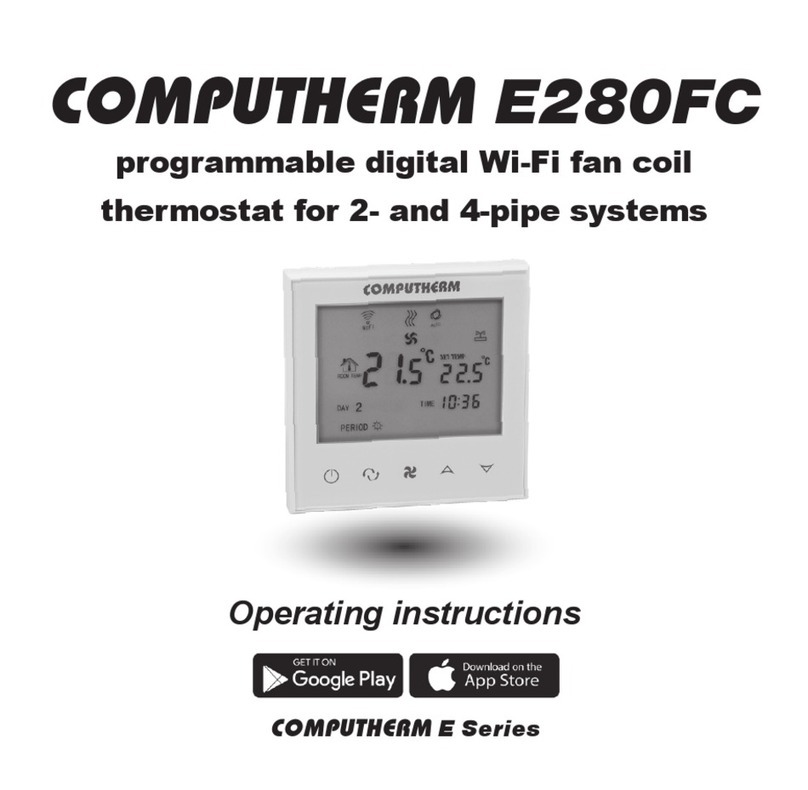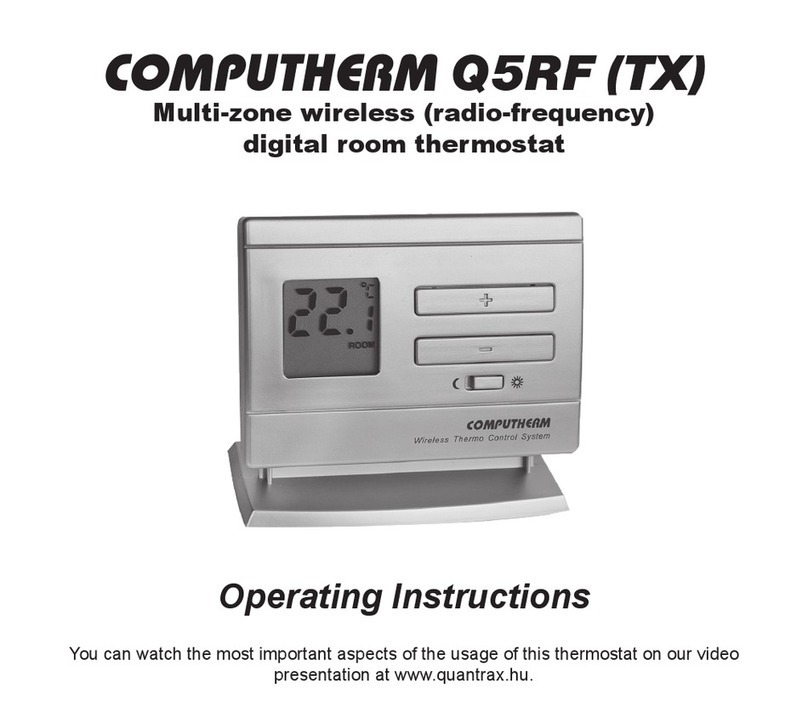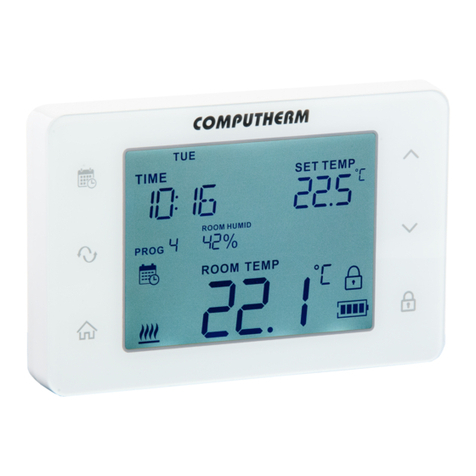
- 8 -
To switch between the two modes, 1st press the “SET” button to go to the main screen.
Then press the “SET” button again and hold it down and press the “COPY” button, too.
After this, the notice “ ” or “ ” appears in place of the time characters, according to
the selected mode. Following this, switch between the modes using the large and
buttons, then conrm it by pressing the “SET” button (if no buttons are pressed for
at least 15 seconds, the setting is automatically conrmed). After this conrmation, the
device goes back to the main screen.
2.4 Setting the switching sensitivity (accuracy)
There is a possibility to change the switching sensitivity. The switching sensitivity means
the temperature dierence between the adjusted value and the actual temperature
measured during the switching process.
A smaller switching sensitivity results in steadier room temperature and therefore in higher
comfort. The heat loss of the room (building) does not depend on the switching sensitivity.
If higher comfort is needed, the switching sensitivity should be set so that it provides a
steadier room temperature. On the other hand, please also take into account that the
boiler should not switch on and o multiple times in an hour's time except at low outside
temperatures (e.g. -10 °C), since the frequent on and o switches of the boiler reduce its
eciency and hence increases the gas consumption. We recommend using the ±0.1 °C
switching sensitivity for heating systems with high thermal inertia (e.g. underoor heating),
the ±0.2 °C (factory default setting) and ±0.3 °C switching sensitivity for heating systems
with low thermal inertia (e.g. at panel radiators).






























